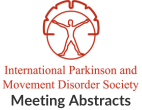Category: Genetics (Non-PD)
Objective: To identify the prevalence and phenotype of patients with biallelic pathogenic SPG7 mutations
Background: Spastic Paraplegia Type 7 (SPG7) is an autosomal recessive disorder historically presenting as a Hereditary Spastic Paraparesis (HSP). It is now widely known that the phenotype of SPG7 is broad, including a pure cerebellar ataxia, mixed spastic-ataxia, and additional neurological manifestations including sensorimotor neuropathy and optic atrophy.
Method: An audit of patients with confirmed biallelic pathogenic mutations on the SPG7 gene was undertaken at The Walton Centre.
Results: Overall, twenty patients were identified, eight of whom had a ‘pure’ HSP phenotype. Eight had a complex phenotype with mixed spastic-ataxia and three had a pure cerebellar ataxia without evidence of spasticity. One patient had a novel phenotype of chronic progressive external ophthalmalgia without any additional neurological features. average age of symptom onset was 49 years old. Seven patients had a genetically confirmed relative with SPG7 including a sibling trio.
MRI brain imaging was available fifteen patients, with significant cerebellar volume loss present in 67% of scans. The ‘eye of the tiger sign’ has previously been reported in some patients with SPG7 but was not present in any of our cohort. 80% of scans had evidence of dentate hyperintensity on T2 weighted imaging.
The most prevalent pathogenic variant was that of c.1529C>T, p(Ala510Val) which is in keeping with other cohort studies. Five of our patients were homozygous for this variant with a further nine patients compound heterozygous for this variant. We did not identify any significant differences in presentation between compound heterozygotes of homozygotes of the c.1529C>T, p(Ala510Val) allele.
Conclusion: Our findings suggest that SPG7 is perhaps more prevalent that current estimates with a wider phenotypic spectrum. Additionally, our findings support dentate nucleus T2 hyperintensity as a radiological sign in SPG7.
References: Baviera-Muñoz R, Campins-Romeu M, Carretero-Vilarroig Let al. Clinical and genetic characteristics of 21 Spanish patients with biallelic pathogenic SPG7 mutations. J Neurol Sci. 2021 Oct 15;429:118062.
Channa A. Hewamadduma, Nigel Hoggard, Ronan O’Malley, Et al. Novel genotype-phenotype and MRI correlations in a large cohort of patients with SPG7 mutations. Neurol Genet Dec 2018, 4 (6) e279
Choquet K, Tétreault M, Yang Set al. SPG7 mutations explain a significant proportion of French Canadian spastic ataxia cases. Eur J Hum Genet. 2016 Jul;24(7):1016-21.
Gerald Pfeffer, MD, CM, Angela Pyle, PhD, Helen Griffin, PhD, Et al. SPG7 mutations are a common cause of undiagnosed ataxia. Neurology. 2015 Mar 17; 84(11): 1174–1176
Rizzo G, Tonon C, Gramegna LL, Et al. ”Eye of tiger sign” mimic in patients with spastic paraplegia gene 7 (SPG7) mutations. Parkinsonism Relat Disord. 2020 Dec;81:158-160.
Sáenz-Farret M, Lang AE, Kalia L, Et al. Spastic Paraplegia Type 7 and Movement Disorders: Beyond the Spastic Paraplegia. Mov Disord Clin Pract. 2022 Apr 1;9(4):522-529.
van Gassen KL, van der Heijden CD, de Bot ST, Et al. Genotype-phenotype correlations in spastic paraplegia type 7: a study in a large Dutch cohort. Brain. 2012 Oct;135(Pt 10):2994-3004.
To cite this abstract in AMA style:
R. Heartshorne, J. Proudfoot-Jones, A. Barakat, M. Bonello. Clinical and genetic characteristics of a cohort of 20 patients with confirmed biallelic pathogenic SPG7 mutations from the North West of England [abstract]. Mov Disord. 2023; 38 (suppl 1). https://www.mdsabstracts.org/abstract/clinical-and-genetic-characteristics-of-a-cohort-of-20-patients-with-confirmed-biallelic-pathogenic-spg7-mutations-from-the-north-west-of-england/. Accessed December 13, 2025.« Back to 2023 International Congress
MDS Abstracts - https://www.mdsabstracts.org/abstract/clinical-and-genetic-characteristics-of-a-cohort-of-20-patients-with-confirmed-biallelic-pathogenic-spg7-mutations-from-the-north-west-of-england/
